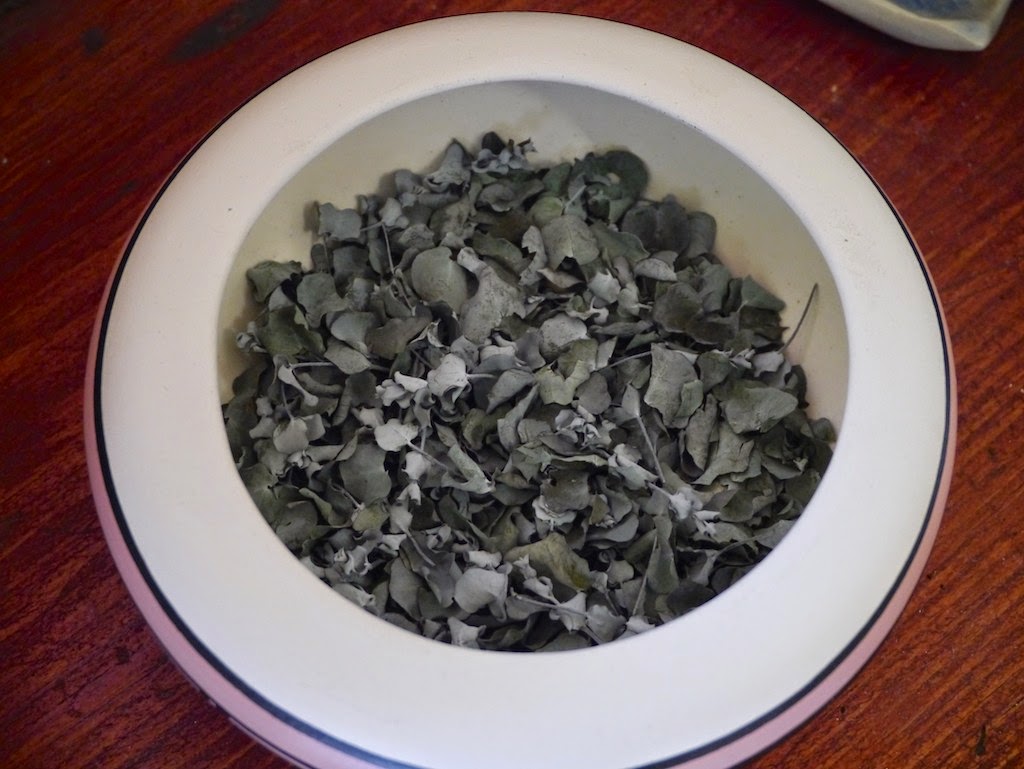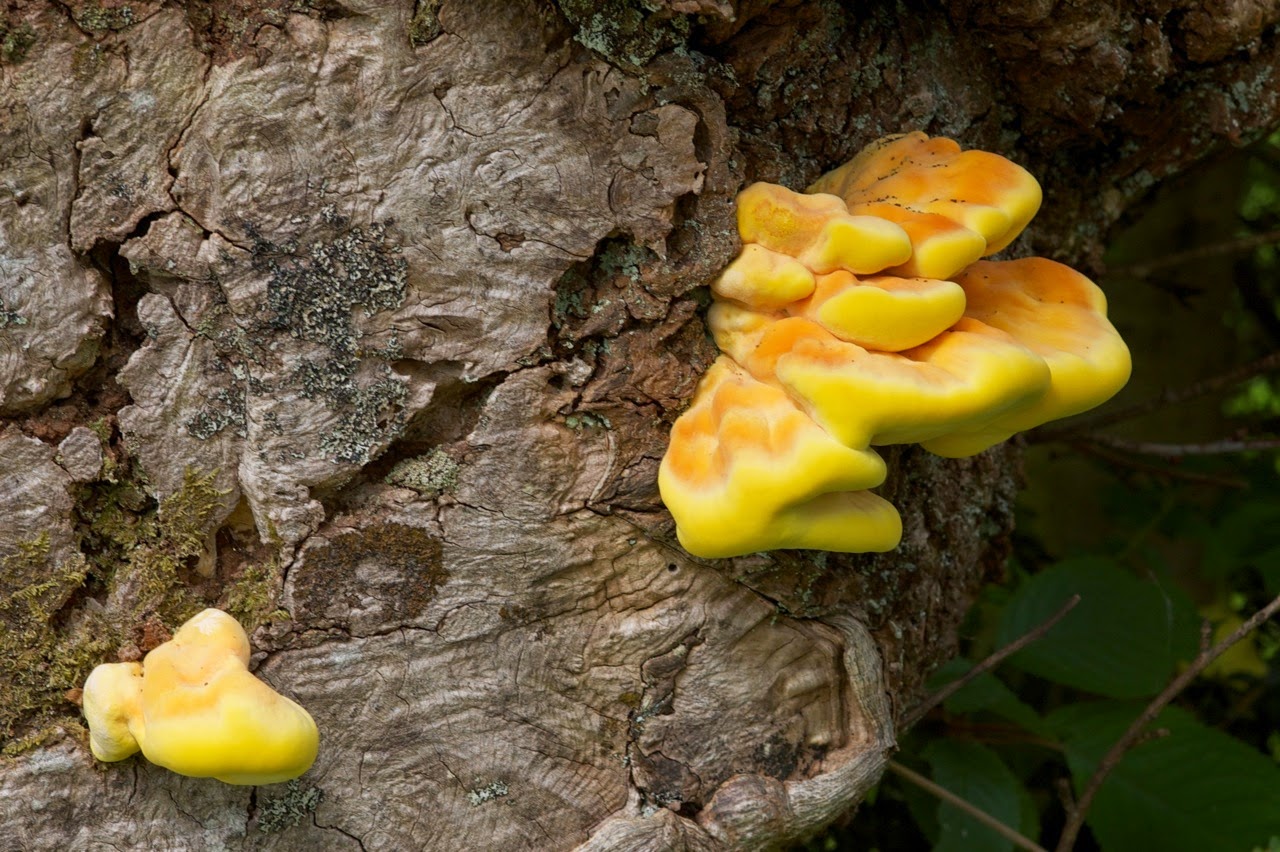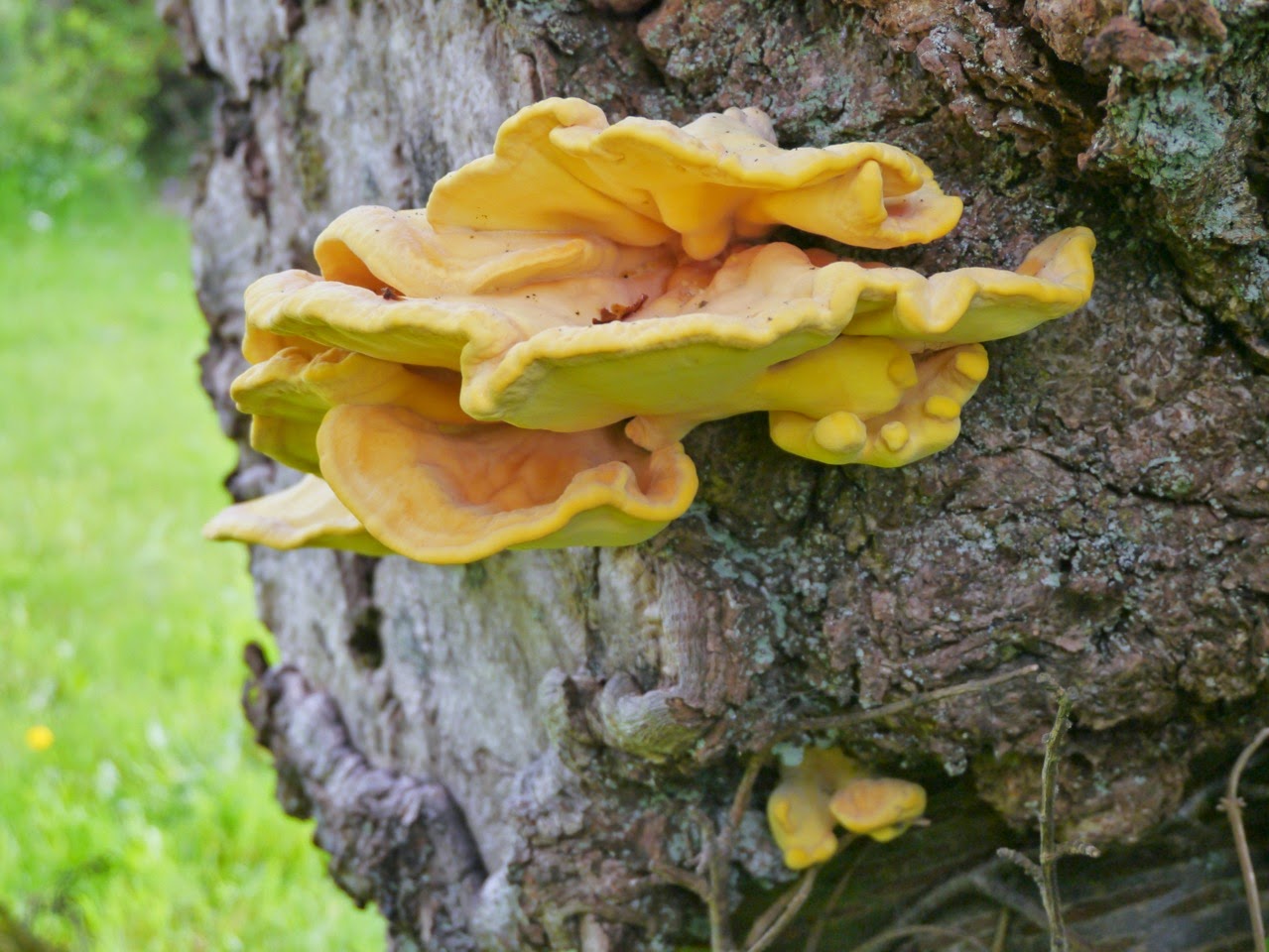Yesterday I was struggling to identify the moss on these pieces of rotting spruce. Years ago the people who lived at the Boggy Brae planted two of their christmas trees on the south-east slope and left them to grow. Judging from the size of the stumps that are left, the trees grew huge and must have blocked a lot of light. Eventually they were cut down and slices of the thick trunk left to rot at the side of the garden. Over the years these slices of trunk have become tiny jungles of mini-plants, mini-beasts and fungi.
So yesterday afternoon I went to have another look at the moss in situ. You can see bright green patches of it in the middle of this pic. It's just possible to see where I took my samples from at the top.
Unfortunately, my welly-booted foot slipped as I was crouching to look closer and this happened:
 |
| A large piece of one of the logs broke away when I fell against it |
 |
| I like the shadow of the fern on the wood I think it is Broad Buckler Fern (Dryopteris dilatata) There are lots of all sizes at Boggy Brae |
I also noticed bluish-white ant pupae and, in next to no time, ants scurrying about rescuing them and taking them back into the 'rooms' of the ant nest. If they'd had time to do anything else I expect they'd have marched over and (justifiably) bitten me for my clumsiness in wrecking their home. It's not often you get to see some of the inside of an ant nest so I enjoyed the view.
 |
| Ant pupae being taken to safety by adult worker ants |
 |
| Ant nest 'rooms' in a rotting log |
I took some more pictures of the moss and with those and a bit more microscopic peering, I think I have identified it as Dicranum scoparium (Broom Fork-moss). you can click on the pics to enlarge them.
 |
| Dicranum scoparium/Broom Fork-moss |
 |
| Dicranum scoparium/Broom Fork-moss |
 |
| Dicranum scoparium/Broom Fork-moss |
 |
| Dicranum scoparium/Broom Fork-moss |
Somewhere along the way in my searching I seem to remember reading about orangey-red rhizoids, which this moss certainly had, but there is nothing about that in either my Moss Guide by the British Bryological Society (ISBN 978-0-9561310-1-0) or in Roger Phillips photographic book (ISBN 0-330-25959-8) so perhaps it was with reference to another moss. However, my sample did have orangey-red rhizoids.
 |
| Rhizoids of Dicranum Scoparium |
This morning I discovered that although the ants didn't get me (this time! still have scars from the last time weeks ago!!), a tick did. Hey ho, life on the boggy brae.
I'm always happy to be corrected by PWK (People Who Know) so do let me know if I've got an ID wrong.


.jpg)












































